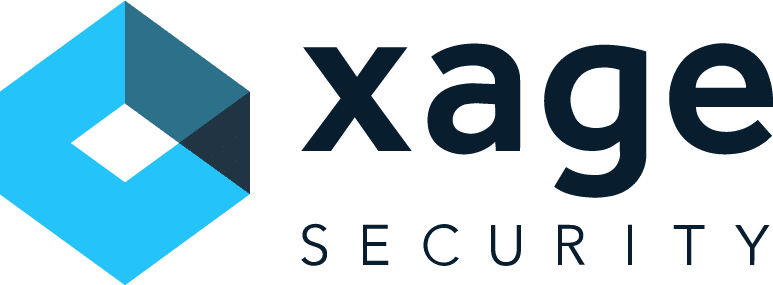Cybersecurity risks are escalating on multiple fronts, testing the resilience of both public institutions and private enterprises. From breaches in government systems that expose sensitive judicial records to ransomware campaigns crippling critical infrastructure across continents, attackers are exploiting every gap in digital defenses.
At the same time, artificial intelligence is amplifying the threat landscape, enabling ultra-realistic phishing, deepfakes, and automated attacks that bypass traditional detection methods. Governments, technology providers, and security leaders are responding with urgent measures—from national action plans and training programs to stricter AI governance and Zero Trust architectures. This blog explores the most pressing developments of August 2025, what they signal about the future of cyber risk, and why proactive, Zero Trust defense strategies are now a strategic imperative.
Breaches in the Public Sector
The US federal judiciary suffered a breach of its electronic case filing system, which includes sealed materials containing highly sensitive information. Meanwhile in St. Paul, Minnesota, a separate cyberattack paralyzed city systems so severely that the governor activated the National Guard to assist in recovery. These incidents highlight the breadth of impact breaches of public sector information and resources can have on the general public.
Critical Infrastructure in the Crosshairs
The private sector has not been spared. Critical infrastructure sectors remain under relentless attack, with adversaries increasingly targeting OT and CPS systems—many of which harbor long-standing, unpatched vulnerabilities. In just one week this August, CISA issued 10 CPS-related advisories, underscoring both the sheer volume of threats and the difficulty of keeping pace. These warnings coincided with a joint Dragos–Marsh McLennan report estimating that a catastrophic OT-focused cyber event could cost $330 billion annually—$172 billion of which would stem from business interruption alone.
Adding to these concerns, the FBI and Cisco Talos revealed in August that Russia’s FSB-linked Center 16 has been exploiting a seven-year-old Cisco IOS vulnerability in thousands of networking devices tied to U.S. critical infrastructure. The campaign, active for more than a year, has targeted telecommunications, education, and manufacturing sectors, with evidence of long-term reconnaissance and persistence. The operation also extends across Asia, Africa, and Europe, underscoring how state-backed espionage compounds the risks already facing critical systems
Globally, ransomware against critical infrastructure continues to be a pervasive theme. In the UK, Colt Telecom was hit by the WarLock gang, disrupting services across 30 countries and exposing sensitive corporate data. The incident illustrates how a single provider’s compromise can cascade across borders. Meanwhile, in the Middle East, a new “Charon” ransomware variant employed DLL sideloading—tactics usually associated with advanced persistent threats—against aviation and public sector organizations.
In Pakistan, state-owned Pakistan Petroleum reported an attempted breach by the emerging Blue Locker strain. This attack was part of a much larger trend: ransomware targeting oil and gas surged 935% year-over-year, fueled by rapid digitalization and an expanding attack surface. A recent scan of 21 major U.S. energy providers uncovered more than 5,750 vulnerabilities—nearly 380 already under active exploitation—underscoring systemic risks. For OT devices, patching is rarely viable, leaving organizations exposed for extended periods without compensating controls.
Patching alone is not a panacea. Xage recommends proactive protection strategies to mitigate risks posed by vulnerable, unpatched, or unpatchable devices. The economic, operational, and human consequences demand urgent investment in Zero Trust segmentation and identity-first security. Without it, the cost of inaction will be measured not only in dollars—but in safety, stability, and trust.
AI Security as a Strategic Imperative
Kaspersky reported a sharp rise in AI-generated phishing attacks, blocking 142 million malicious clicks in Q2 2025—a 3.3% increase from the previous quarter. Unlike earlier campaigns, these phishing attempts leverage ultra-convincing emails, messages, and websites that often contain no grammatical or stylistic red flags, making them nearly indistinguishable from legitimate communications.
The security industry is mobilizing in response. Anthropic updated its Claude policy to explicitly prohibit dangerous or malicious use, including the creation of malware, DDoS tools, or vulnerability exploits. It also tightened restrictions around weaponization—explicitly banning CBRN-related development—and limited certain high-risk applications to consumer contexts.
Governments are also taking proactive measures. India launched a six-month training program for cyber responders focused on AI-driven crimes—including deepfakes, automated phishing, identity spoofing, and algorithmic attacks. Developed in partnership with the defense science establishment, the program uses live simulations and was prompted by findings that AI is involved in over 83% of phishing campaigns.
China is also tackling AI security, taking a top-down approach by treating security as the foundation for innovation rather than a regulatory burden. The government has elevated AI risks to the highest levels of policymaking, with President Xi hosting a Politburo session on the issue and formally integrating AI safety into national emergency planning. Regulators now mandate pre-deployment safety assessments for generative AI, have removed thousands of non-compliant products, and accelerated the release of national AI standards—issuing more in early 2025 than in the prior three years combined.
Meanwhile, in the United States, the White House unveiled “America’s AI Action Plan” in July 2025 under an executive order, outlining a national strategy to solidify U.S. leadership in artificial intelligence. It focuses on accelerating AI innovation by cutting regulatory barriers and boosting federal adoption, building critical infrastructure such as data centers, chips, and energy capacity, and strengthening the workforce pipeline. The plan also emphasizes international leadership—exporting U.S. AI technology to allies, shaping global standards, and securing supply chains—while framing safety and security through a national-security lens. Together, these steps aim to drive rapid adoption of AI across government and industry while ensuring American dominance in the global AI race.
As AI-driven threats escalate—from phishing campaigns to deepfake-enabled fraud—governments and industry alike are racing to respond. While companies refine safeguards and policies, nations are shaping distinct strategies: India through workforce training, China through safety-first regulation, and the United States through innovation-driven national policy. Despite their differences, the common thread is clear—AI security is no longer optional, but an urgent global priority that will define both technological leadership and resilience in the years ahead.










